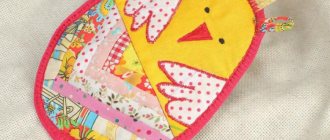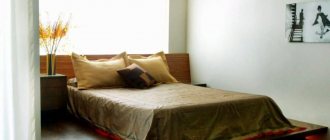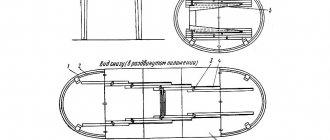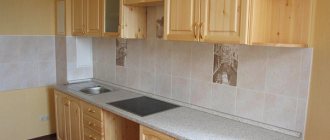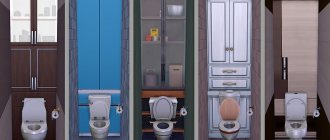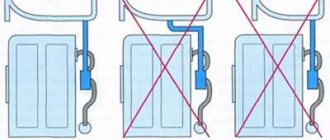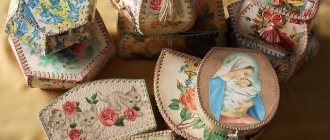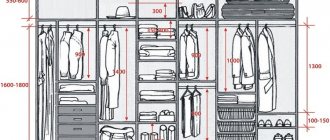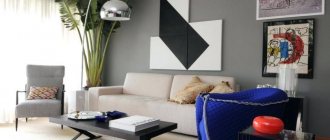A canopy is a special canopy, in ancient times designed to protect the sleeper from cold and drafts, and in modern times to decorate the interior. This product can easily fit into more than a dozen popular styles. A canopy over the bed is hung in both adult and children's rooms, made of thick or lace fabric.
A cozy and sophisticated solution for the bedroom is a four-poster bed.
What is the correct name for a canopy over a bed?
The first mentions of canopies are found in the East. They were made of natural silk, mounted on wooden frames, and protected from annoying insects and prying eyes. They later appeared in Europe - this was at a time when those who could afford to purchase large pieces of fabric lived in castles. It was cold there, the thick, heavy woolen canopy perfectly retained the heat.
Once upon a time, a canopy was necessary to protect the sleeper from insects and drafts.
Even later, canopies appeared in palaces. There they were luxurious, lace, trimmed with beads, pearls, hand-embroidered products, made from the most expensive materials. Forged or carved frames with the most bizarre shapes were created as support for them.
Sewing master class
When forming a pattern, all the parts need to be sewn together. First of all, processing of the bottom and sides of the fabric is required. When adding lace or satin ribbon to the product, you need to sew on the braid immediately after finishing the edges, since after the skirt is attached, this procedure will be more difficult.
Finished product according to the diagram
For a canopy with a skirt, you need to take a wide strip of fabric and sew the main hanging fabric into it. Next, you need to distribute the seam so that it is closer to the top. To do this, it is necessary to iron the fabric so that the seam with the fastening of the main fabric is closer to the top. The width of the skirt should be 15 centimeters, and the length up to 60 centimeters. Finally, you need to secure the product into a ring.
Advantages, disadvantages of canopy
Any canopy over a children's or adult bed has certain advantages:
- dense drapery protects from drafts, retaining heat;
- thin translucent fabric, when properly attached, protects against mosquitoes, flies, and midges;
- a dark blanket protects from sunlight and artificial light;
- an opaque option will create a closed personal space;
- a lace canopy will create a “zest” in the interior, making it luxurious and original;
- The product is easy to create with your own hands.
Currently, the canopy is more of a decorative than a utilitarian interior detail.
There are also some disadvantages:
- textile material collects dust, which is very dangerous for allergy sufferers;
- dense fabric does not allow air to pass through well, which is also not useful;
- the material often has to be washed in order for it to have a beautiful appearance;
- wrinkled fabrics require ironing after each wash, smoothing out all wrinkles and lace;
- clutters the bedroom, making it cramped.
Disadvantages of textile decoration
There are not so many disadvantages, but they still need to be known and taken into account.
- Curtain fabric is usually made from a material that likes to collect dust. If you plan to install a canopy over a child’s bed, then you will have to wash it very often.
The canopy is a fighter for cleanliness, filters the air entering the bed and ensures healthy sleep. - In the interior of a small room, a curtained bed looks massive and the space seems even smaller. After all, the canopy was created for spacious apartments. But light, small curtains over a baby’s cradle may be appropriate in a small bedroom.
The canopy will be a beautiful element of decor, adding some zest to it.
These are, perhaps, all the shortcomings. And if they do not stop those who want to equip their cozy nest, then we will continue to understand the issue.
Varieties of shapes, designs
Canopies over the bed differ not only in the type of fabric used, but also in the way they are hung. For various interior styles, luxurious, voluminous structures on high supports or more compact ones with unobtrusive fastenings are built. Different fabrics are also suitable: thick, warm ones are used to retain heat, mesh protects against insects, lace serves as decoration.
A stylish decoration made of frame and fabric creates a cozy atmosphere of privacy and tranquility.
Brief general master class
It is possible to “award” the bed with a canopy yourself, but you need to follow clear instructions. First you need to acquire the following tools:
- Tape measure (for measuring distances on the mounting surface);
- Drill/driver (for creating mounting holes);
- Pencil (mark the boundaries of the work, drilling locations);
- Dowels, anchors with hooks (fasteners).
Tools that will be useful to you when making your own canopy.
Types of frames
These are structures on four supports and semicircular “crowns”, ceiling beams and small rings, stretch ceiling cornices and wall fastenings. Also, drapery is sometimes located on the frame in the form of a rhombus, oval, wave, arc, or hoop. Using a canopy, the room is zoned.
On four supports
The four legs are usually an extension of the bed legs, pointing towards the ceiling. At the top, at a height of two to three meters or more, there are transverse crossbars through which the fabric is thrown. The design is suitable for classic, loft, and historical interiors. The most expensive options are decorated with forged and carved elements.
Increases comfort while sleeping by protecting against sunlight, drafts and mosquitoes.
Wall mount
Such holders have the shape of an arc, a semicircle, mounted to the wall in two places. The fabric is attached like curtains. For convenience, the fastening is made detachable - consisting of two flexible parts with a latch in the middle or on the edge. In another version, a long crossbar is attached to the wall, over which the fabric is thrown.
A canopy enlivens the bedroom interior, adding a touch of romance to the decor.
Canopy tent on a holder in the form of a ring
The round holder is suspended from the ceiling using a hook, attached to a tripod at the head of the bed, and mounted directly to the wall. In some options, in addition to the central fastening, tying is done on vertical posts located in the corners of the bed.
This decor helps set a certain style direction.
On the eaves of a suspended ceiling
The construction of such a structure is thought out in advance. In the suspended ceiling, niches are then provided for a hidden cornice - round, rectangular, oval. Less often, the cornice is made visible and very voluminous, but its installation will require preliminary installation of embedded bars.
The canopy creates an area of privacy and comfort, which is especially useful if the house has high ceilings.
On the headboard
There are also vertical fastenings mounted at the head of the bed, to its back. This canopy can be easily removed against the wall, and sometimes has additional wall holders.
Almost any bed can be decorated with a canopy.
Floor design
The structure is a heavy, stable tripod located at the head or side of the bed. In its upper part there is a split ring, an oval holder.
A canopy will not be superfluous over an elongated crib for an older baby, because the child still needs a comfortable sleep.
Suspended ceiling options
It is permissible to throw the drapery over a hollow pipe, a wooden crossbar located under the ceiling above the middle of the bed. Another suitable option is “sail”. Two crossbars are fastened with cables at four points, textile material is tied or put on them. The canopy appears to be purely symbolic, located only in a horizontal plane - nothing hangs to the sides.
To make the canopy look harmonious, the holder for it is selected taking into account the dimensions of the bedroom and bed.
Mounting options
Sewing a canopy usually does not take much time and does not require specific skills. Any woman who has basic sewing skills on a machine will cope with this task perfectly. The process of attaching the frame can create some difficulties, so it is worth considering common fixation options.
| Name | Mounting type |
| Along the perimeter of the bed | Vertical posts are installed in each corner of the bed. Above the bed itself there is also a horizontal structure where the fabric is attached. Instead of pipes, you can use a regular window cornice. |
| Arc mount | With this option, a semicircle is created from pipes, the ends of which rest against the wall. The canopy is fixed to the frame like curtains. |
| Straight pipe mount | For the frame you only need one pipe - it is fixed in the middle of the bedroom, and the fabric is thrown over it. |
| Crown | A round pipe is fixed above the bed on the ceiling - fabric is pulled through it. |
It is better to choose the type of fastening that will be most appropriate in the bedroom. Don’t chase fashion trends: if the bedroom is small, give preference to an arched mount. If you have a large space, you can install a classic canopy around the perimeter.
Crown
Along the perimeter
Arc-shaped
On a straight pipe
Frame materials
The frame base is made of metal, wood, in the case of small structures and light fabrics, for example plastic, hollow pipes. Sometimes the basis is cords and ropes stretched from the ceiling. In ethnic interiors, rough driftwood, sticks, and branches act as frames.
A large double design with a canopy is the most common option for a bedroom.
Canopy fabric
The textile materials used are very different, but it is advisable to use those that do not stretch or deform during use and washing. It is important to consider the length - it is advisable that the product goes down almost to the floor, as shorter options look “poor”.
When choosing fabric for a canopy, you need to take into account both the taste preferences of the bedroom owner and the style of the interior.
Double suspension
If you have high ceilings, you may want to mount the canopy lower. In this case, take two short rods or wooden tubes, on which the fabric will hang in the manner of the previous master class. Tie ribbons to the rods at each end and then tie each of the ribbons to hooks mounted in the ceiling: it will be more secure if each of the four ribbons has its own hook.
The fabric around the rods can be stitched to help it hold better, or simply secured with discreet pins. To prevent fabric and ribbon knots from falling off the ends of the rod, install plugs. We found a tutorial where flat wooden circles were simply glued to the end of a rod, but in this case it is better to use pins rather than thread to secure the fabric itself, so that the fabric can be removed for washing. This idea can be implemented not across the bed, but along it
Design nuances for different types of furniture
Canopies are built over various pieces of furniture - single, single, double, bunk beds, sofa, house crib.
For a bunk bed
The canopy for a “two-story” structure, an attic, is usually attached to the sides of the upper tier. The drapery hides only the lower “floor”. Less common are canopies from the ceiling to the floor - then both the upper and lower bunks are covered with fabric.
Such canvases are distinguished by their tenderness, diffuse light well, but at the same time give a feeling of privacy.
For a double bed
For a double bed, a very voluminous canopy is made. Usually it is mounted on a frame that is integral with the bed. Options for a round or square ceiling cornice look good - the material seems to “flow” from the ceiling itself.
An elegant round bed with a transparent canopy looks especially gentle in the interior.
On a bed-house
A kind of “house” is obtained if you build a frame of the appropriate shape - when viewed from the end, it is pentagonal. Most often, the fabric is simply thrown over it or secured to the central crossbar. Less commonly, the upper part is sewn separately; four separate draperies are attached to its lower edge, tied with cords to the corner supports.
A canopy made of an airy veil will decorate the bedroom, but will not protect from sunlight.
The “tent” is different in that it is mounted on a round base located on top of the house. This is a solid frame, fixed to inclined posts leading to the corners of the bed, or the upper part is made suspended.
Above the sofa
The canopy, located above the sofa, is usually attached to the wall, along the long side of the folded structure. Ceiling options are used if the piece of furniture is folded forward. For modular sofas, which can be transformed in different ways, mobile mounts on folding ceiling hangers or narrow rails are suitable, where it is permissible not only to change the location of the canopy, but also the height relative to the floor level.
A well-chosen canopy decorates the bedroom and draws the eye to its central element.
Curtains with fireflies
The bed can be decorated with fabric in the corners if overhanging fabrics confuse you. In the photo below, two curtains were hung on rings (the same hoops will do), which in turn were attached to hooks on the ceiling. This way you can decorate all four corners of the bed. The idea looks even better if you decorate the curtains with glowing garlands.
Features of a four-poster bed for different ages, genders
It is permissible to place curtains over the beds of people of any gender and age. Most often, this is done to ensure at least minimal privacy when several people sleep in the same room. The dark canopy allows you to relax and quickly fall asleep in a small cozy house.
Depending on age
Canopies of various designs will appeal to both adults, elderly people and children. Any fabric is acceptable, preferably one that does not collect a lot of dust. Under a canopy decorated in a palace style, it’s easy to feel like a noble person for a moment.
For an adult bed
The canopy over an adult bed is a “tent”, a quadrangular or round structure. This is a convenient thing for people who have difficulty relaxing and falling asleep. If desired, a lamp is mounted in the upper part of the structure to make it convenient to read before bed without disturbing others' sleep.
A bed with a canopy on the ceiling looks original and modern.
In the men's room, the canopy plays an exclusively functional role - protection from noise, light, and drafts. Any decorations are not appropriate here. The female version also performs protective functions, but is almost always also a decoration. It is sewn from shiny lace fabric, richly embroidered with colored threads.
Advice: in the case of creating a canopy for a couple’s bed, choose a neutral but luxurious option.
For a teenage bed
Canopies for boys and girls differ little from the designs of younger children of the corresponding sex, with the only difference being that young people already know exactly what they would like to see in their room. Many teenagers go through a period when they prefer dark colors - don't stop them from doing so. It is not necessary to sew a canopy from ordinary pure black fabric - it looks much more beautiful:
- anthracite gray;
- brown;
- fir-black;
- cobalt blue;
- dark red-brown;
- purple-black;
- grey-green;
- brown-willow;
- emerald black;
- sapphire blue;
- umber gray.
A canopy in a room helps create a special mood of relaxation after a hard day.
For the nursery
It is recommended to make the canopy over the bed of a toddler, preschooler, or elementary school student non-staining and from a material that can be easily washed. Small children often taste and touch everything, so the drapery gets dirty very quickly. The drapery forms part of the themed interior, where the baby will have fun playing.
The canopy has a decorative function, softly decorating the roofs of the houses.
For a newborn
The canopy over the baby’s crib creates a kind of dark, warm, cozy “nest” where the baby will feel protected. The canopy is usually placed over the cradle, made of two layers: a thin mesh layer will protect from mosquitoes, flies, midges, a denser one will protect from daylight, electric light, and drafts. The design ensures psychological peace and normal sleep for the baby.
A canopy is a very functional element of a crib for newborns.
Advice: the canopy must be secured firmly, as firmly as possible, preferably in several places, so that the child cannot tear it off or get too entangled.
Current styles
For a comfortable rest, it is best to make a bed that matches the overall style of the room. Otherwise, resonance will be created in space. In addition, the selection should be made depending on the size of the room itself. There are several current styles that can be divided into 3 large groups: for small, medium and large bedrooms.
Small bedrooms
For such rooms, a bed in the style of High-Tech, Minimalism, Loft, East Asian style is suitable:
High-tech style beds are distinguished by their originality and interesting design, which is most often complemented by practicality and functionality. Such sleeping places have unusual shapes and a modern look. The presence of correct geometric shapes and shiny surfaces is mandatory. The dominant color scheme is pure and life-affirming colors: white, yellow, red, green, etc.
Under the influence of such premises, designers began to create a whole series of furniture (chairs, tables, beds, etc.) dedicated to this style. As for the beds, they stand out for their simplicity and neutrality in color. A distinctive feature is also the presence of “rough” elements. For example, the headrest may have metal rivets or artificial abrasions.
Medium sized rooms
For medium-sized bedrooms, beds in Provence, Country or Modern style are suitable:
Provence style is subconsciously perceived as something airy, light and unpretentious. Such beds are suitable for connoisseurs of classics and general sophistication in the interior. The sleeping beds have impeccably regular and clear shapes, which are combined with the airiness and volume of the bedspreads and pillows. The main highlight is the headboard (it should be beautiful and soft), as well as the whimsicality of the supporting legs (they can be curved, twisted or carved). The predominant colors are pastel shades.
Large spaces
The large room allows you to place beds of any style, but sleeping places in the Baroque, Empire, Rococo and, of course, Classicism styles will add special sophistication:
Baroque is sometimes called pretentious, as it implies an abundance of decorative elements, gilding, rich and dense materials for upholstering the bed. In most cases, the bed has a large and massive headboard, which can be supplemented with stucco. Color also matters a lot. Usually these are shades of blue, silver, pistachio, gold, pink, red.
The body is made without frills, of the correct shape. The materials for making beds are high quality and durable. It can be wood or metal. The color palette is very restrained, but may include bright, but not flashy, decorative elements. There are white, black, gray and other pastel shades.
Depending on gender
Many parents decorate their children's rooms with beautiful canopies. Children of the same gender and age are often given the same canopies, different genders, but approximately the same age - different in color, but similar in design, so as not to disturb the overall room design.
For boy
The design in a boy's room often reminds of the sea and is made more austere than in a girl's room. Drapery is not decorated with lace, but ribbons and cords are acceptable. Suitable colors are sky blue, light gray, thistle, khaki, pistachio, moderate green, turquoise, snow blue.
Boys will like this design of a four-poster bed more.
For girl
The canopy over a girl's crib is usually replete with lace, frills, and is made in snow-white, lavender, apricot, soft pink, amaranth, lime, light yellow or fuchsia. Drapery is often associated with a doll's house or princess's palace, but more modest options are acceptable.
A girl over two years old will appreciate an original four-poster bed.
Neutral options
This design is suitable when two or more children of both sexes live in the bedroom. Excessive frill lace is inappropriate in this case; the colors are chosen to be the same for all canopies or overlap.
If there are no racks, then a frame placed under the ceiling can be used as a canopy.
Suitable options:
- ebony pink;
- light green;
- cornflower;
- beige;
- light yellow;
- pale coral;
- sand;
- pale purple;
- pale green;
- dandelion;
- pastel blue;
- olive;
- agate grey.
Which color is better to choose
The trend this season is environmental friendliness and closeness to nature.
The color of textiles in the design should be natural, natural shades. For the bedroom, it is recommended to show your imagination and choose extraordinary combinations. The first requirement: the owners must like the shades; if the apartment owners prefer dark colors, they can be played harmoniously. If the canopy is made of two layers, the top one can be either darker than the bottom or lighter, there are no restrictions. A popular combination of fabrics of the same texture, in colors of the same warmth, but in different shades.
An orange ottoman is a bright accent in the interior. Source www.houzz.es
In a classic styleSource www.pinterest.ru
Stylish canopySource yastroyu.ru
Translucent fabrics are thick enough to dim light and create an intimate setting within the canopy. It is recommended to give preference to light colors: snow-white, milky, beige. For those who want something unusual, deep, complex colors: olive, wine, emerald. Mustard and dark blue (ocean color) are in fashion. Black or dark brown, chocolate (in loft or high-tech style) are often used. At the peak are gray, graphite, wet asphalt - they all go well with other colors and are neutral. Against this background it is convenient to create bright accents in the bedroom design.
The frame is often made to match the color of the bed: made of wood, metal or durable plastic. The color should match the surrounding environment. It is often black, brown or white. For classic interiors or high-tech style, chrome-plated canvas holders are acceptable, shiny, echoing other elements in the interior (for example, handles on furniture).
The color of the canopy in the bedroom should be combined with the textile design of the room; most often the curtains match the color. A harmonious combination of warmth with carpeting, bedding materials, bedspreads and upholstery in the bedroom.
Children's rooms imply light colors and their varieties: all shades of white, beige, light pink, sky blue. They use colorful fabrics with cute patterns that match the child’s bedding or wall coverings. Yellow and light green are popular.
Double bed with canopySource vse.kz
Combination of blue and graySource www.pinterest.ru
Wrought iron canopy bedSource www.houzz.com
How to make a simple canopy with your own hands
A simple way to make a beautiful canopy over a bed is available to anyone who has suitable fasteners, a little fabric, and imagination.
Advantages of creating a homemade version:
- interesting activity, new creative process;
- serious money savings - store buildings cost a lot;
- the opportunity to create a unique product;
- the sleeping place will be decorated in any chosen style; it is difficult to choose a canopy for it.
To work you will need:
- screwdriver;
- sewing machine, overlock;
- dowels, screws;
- threads, needles;
- scissors;
- suitable fabric - its quantity depends on the perimeter of the bed, length - at least two to three meters;
- cornice - a wooden stick or hollow pipe;
- decorative elements for decoration.
The picturesque canopy fits perfectly into the interior of a country-style room.
First, the canopy itself is sewn - from one or two fabrics, its edges are processed, decorated with tassels and frills. Loops and drawstring are sewn on top. The cornice is attached to the ceiling on vertical supports - first, fabric is strung on it and straightened.
The canopy material is chosen to be compatible with other room textiles - bedspreads, tablecloths, chair covers, floor mats. The product can be embroidered by hand or on a machine, decorated with beads, rhinestones, bows, flowers made of satin ribbons, paper butterflies on pins.
Making a bedside curtain
Experienced seamstresses can make a pattern on their own, but novice needlewomen are advised to use a ready-made drawing in the form of a rectangle with one slightly rounded bottom edge. Necessary materials:
- pattern;
- 3 meters of transparent plain material 1.5 meters wide;
- 1 meter of colored fabric 20 cm wide;
- lace;
- a narrow satin ribbon for finishing edges;
- threads to match the fabric;
- sewing machine;
- decorative large bow.
After preparing the materials, you can begin making a beautiful cape.
- Initially, you need to spread the base material on the floor and cut it into two parts. Next, you need to fold the cut parts face inward. You need to attach a pattern to one edge, outline it and cut off the marked rounding with scissors.
- Then you need to stitch the central seam, leaving about 30 centimeters on the top side untouched, and trim the edges with a satin ribbon. Markings should be made on the top part using chalk or soap, drawing two straight lines at a distance of 5 cm and 20 cm from the top edge.
- After this, using a sewing machine or by hand, using a needle and thread, you need to gather the upper edges of the parts of the product (up to a width of 1 meter). The colored decorative piece must be cut in half in the same way, and then short sections on one side must be processed.
- Next, the manufactured sections need to be basted along the marked lines, while simultaneously hemming the fabric. During this, the processed sections should be placed close to the central seam and the stitching should be done along the basting. Now you should trim the top edge of the cape with a satin ribbon. And the sides of the product and the bottom need to be trimmed with lace braid. At the junction of the front sides (on top) it is necessary to fix a decorative bow. By the way, if you wish, you can make it from lace yourself.


